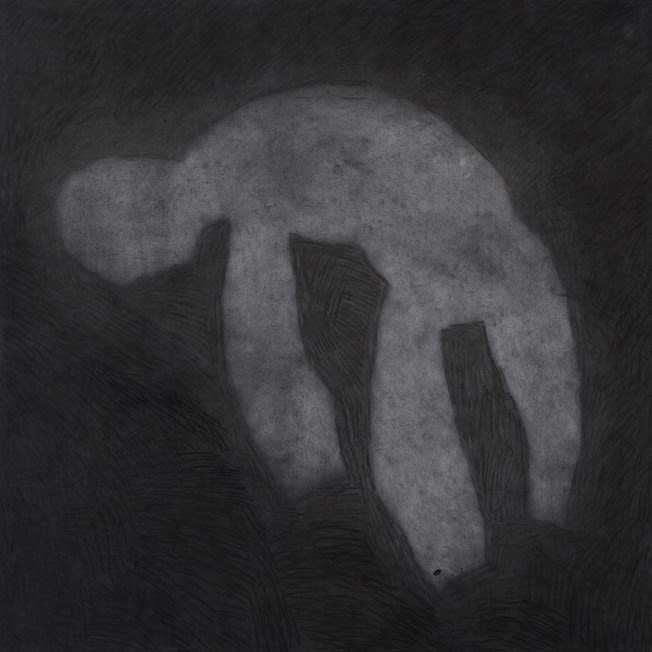‘I do not paint out of luxury, and do not seek beauty; I paint as an attempt to reason with the world and myself.’
Sadik Alfraji
Ayyam Gallery is pleased to announce the solo exhibition, I Do Not Feel Free, by Iraqi artist Sadik Alfraji from 14 March - 27 April 2013. The second exhibition at the newly inaugurated Ayyam Gallery London, this show marks the first time Alfraji has exhibited in the United Kingdom and will feature new works including paintings, drawings and the video installation Godot to Come Yesterday (2013).
Alfraji describes his work as ‘dealing with the problem of existence’. He confronts the viewer with solitary figures depicted in profile and set against stark backgrounds. These simple forms possess a quiet sadness and sense of isolation; through them, he is able to undergo a cathartic process and address his own displacement from his native Iraq.
Alfraji admits that the changing face of his homeland has informed his practice and continues to do so. Since the American invasion in 2003, both his and global perceptions and beliefs have changed irreparably. This was a conflict that for much of the world was experienced through a television screen with many of the people directly involved becoming anonymous shadows, reduced to a series of statistics of casualties and conflict.
At the core of his work, Alfraji is intrigued by the idea that as humans we are endlessly waiting for something meaningless and futile. This is perhaps most evident in the video Godot to Come Yesterday, which sees two textured grey figures moving and interacting against a black void-like backdrop in a reconstructed vision of Samuel Beckett’s famous absurdist play, Waiting for Godot (1952). In Beckett’s play, two characters, Vladimir and Estragon, wait in vain for the arrival of a third character named Godot, attempting to distract themselves through various activities and conversations.
In Alfraji’s compositions, the viewer can easily recognise the shape of a human figure taking shape from bold swathes of black. Despite the impression of a uniform application of colour from a distance, upon closer inspection delicate layers of Indian ink and charcoal become apparent. The layering gives the figures an intensity and denseness, making them all the more distinct from their often completely white backdrops. When speaking of his monochrome palette, Afraji refers to Plato’s Allegory of the Cave; that perhaps we are all watching the world as shadows, and as a result our perception of what is real has been limited – and never more so than during a bloody war.
The simplified forms in his works are often punctuated with strikingly detailed elements – a hand lined by the years, or a pensive eye gazing out at the viewer. These details lift Alfraji’s characters out of the two-dimensional realm and breathe life into them, transforming them from an anonymous shadow into a being seeking a human connection.
Born 1960 in Baghdad, Sadik Alfraji lives and works in Amersfoort, The Netherlands. His work is housed in numerous private and public collections including The National Museum of Modern Art, Baghdad; The Art Center, Baghdad; Royal Association of Fine Arts Amman; Shoman Foundation Amman; French Cultural Center, Amman; Novosibirsk State Art Museum, Russia; and the Cluj-Napoca Art Museum, Romania. Solo shows include Ayyam Gallery DIFC, Dubai (2011); Ayyam Gallery Damascus (2011); Stads Gallery, Amersfoort, Netherlands (2010); Station Museum, Houston (2008-9); Stedelijk Museum, Den Bosch (2007-8). Selected group exhibitions include Mori Art Museum, Tokyo (2012); Mathaf Arab Museum of Modern Art, Qatar (2010-11); CBKU & Centeaal Museum, New Salon, Utrecht (2008).

